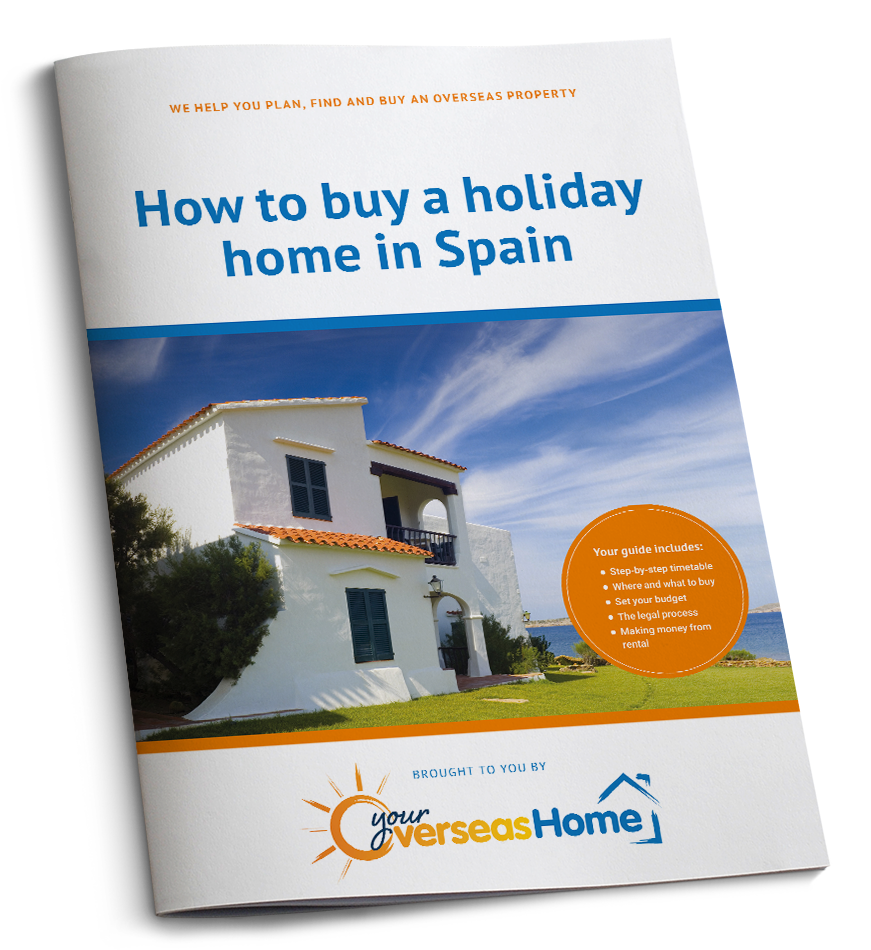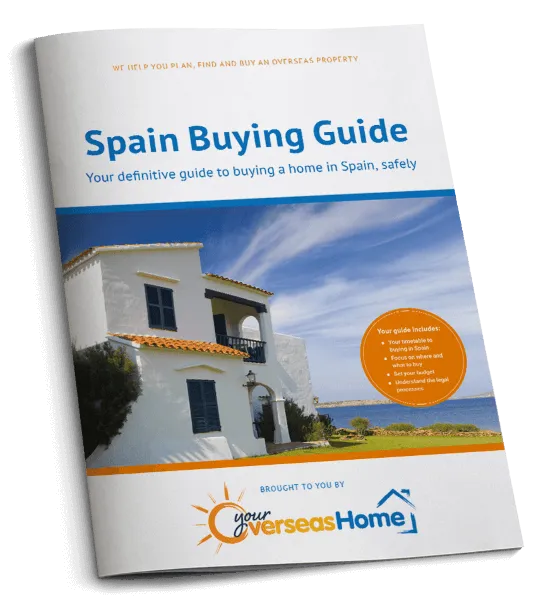Spain’s smaller cities scattered throughout the peninsula, offer a more tranquil, “liveable” lifestyle than some of the costas and bigger cities. The properties are usually more affordable too. Read our guide to seven liveable and loveable, and slightly smaller cities.
When you think of Spanish cities, you’ll normally think of Madrid, Barcelona, Seville, Málaga and Valencia. These large cities are all wonderful places, each with its own identity and culture. But Spain has just as much to offer in its smaller and less well-known cities.
There are certain advantages to living in a smaller community too. Firstly, they tend to avoid the tourists of the coast. Most Spanish towns and cities do get busier in the summer, but a typical tourist who ventures into the hinterland is more likely to be embracing the culture than looking for the nearest Irish bar. Secondly, they don’t close down in winter, like many of the smaller seaside resorts. Spain’s excellent railway infrastructure means you can often get from local airport to town without a car. And that can be quite a saving over the years.
SEARCH for homes all across Spain on our property portal
Thirdly, any and every Spanish town will have its little community of expats. They won’t just come from the UK; people from all over the globe are attracted to the Spanish lifestyle. You can avoid them if you want to, but new arrivals will usually appreciate an accent from home occasionally!
So which are the best of Spain’s smaller cities? Here are seven terrific options.
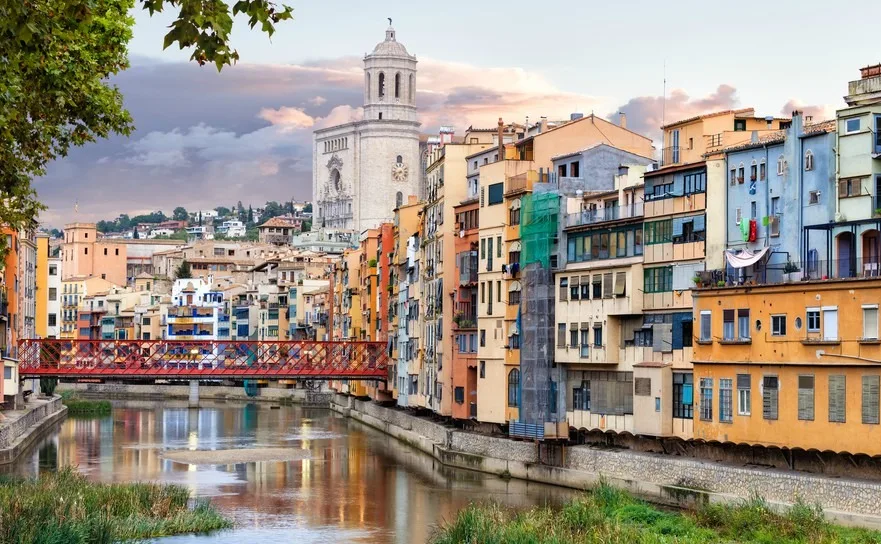
The sun rises over Girona
Girona, Catalonia
Population: 99,000
Closest international airport: local, or Barcelona 113km
Just 90 kilometres from Barcelona, Girona is to many people the airport for cheap flights to visit Barcelona. It’s a shame that more of us don’t take the time to discover this glorious small city. Steeped in history, you’ll enjoy wandering its cobbled streets, its attractive parks, along its two rivers, the Ter and the Onya, and on the old city walls. Girona has an old town and many pleasant residential districts in the new town. Shopping is excellent in the town itself and at the Espai Gironès, an out-of-town shopping centre. There are numerous good restaurants to explore including, arguably, the world’s best restaurant, El Celler de Can Roca.
Girona is a glorious small city, steeped in history where you can wander through cobbled streets or through the parks and on the old city walls.
Girona offers a lot in the way of culture too. That includes the wonderful Auditori concert hall, the Sunset Jazz Club, cinemas, theatre, street music and all types of entertainment. Cinema Truffaut is a particular favourite; a private cinema showing arty films. There is a strong British presence in and around the city, including several groups you can join. If you have kids, there is The International School of Montjuic and a private English school, Saint George’s.
Find beautiful homes in Girona on our property portal
Burgos, Castile and León
Population: 175,000
Closest international airport: Bilbao, 170km, Madrid 250km.
Burgos is full of surprises. Arriving by car, the outskirts look distinctly unpromising but if you park your car and walk in, suddenly a wonderful sight emerges. The centre, with its magnificent cathedral and covered alleyways, is a UNESCO Heritage site. El Hangar is a great venue for music and art. A feast for the eyes and stomach, you can eat pretty well in Burgos’ tapas bars and many good restaurants. History buffs will enjoy tracing the story of its greatest son, El Cid, and this is quite definitely Don Quixote country. Upmarket shopping is the order of the day, though there are cheaper alternatives too. The city doesn’t have an international school but there are some English academies.
A comparatively inexpensive place, on the edges of the city you can find pleasant villas but in the centre there are just apartments. Do beware the weather though: Burgos doesn’t have wall-to-wall sunshine and it can get quite cold in winter.
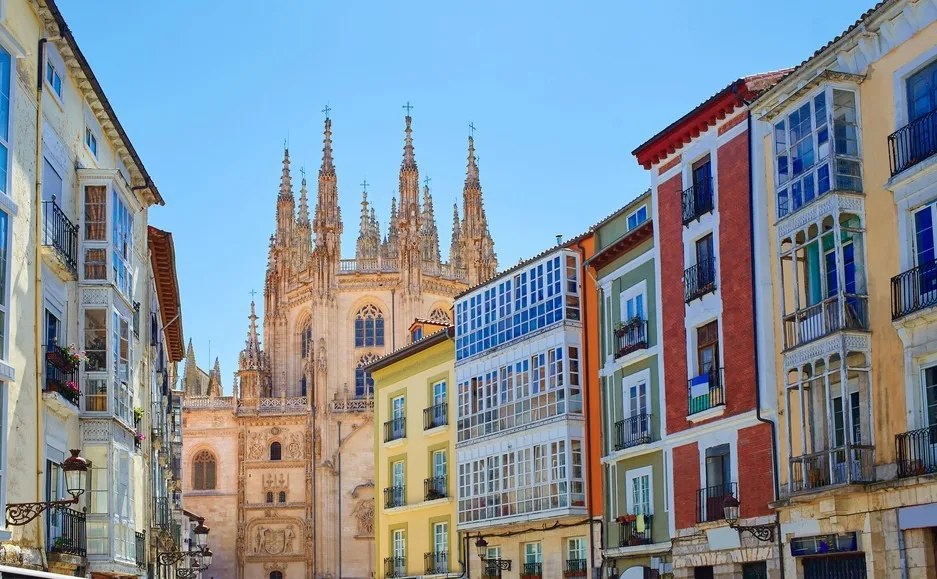
Downtown Burgos with its colourful facades and Cathedral in Castilla Leon
Huesca, Aragón
Population: 52,000
Closest international airport: Zaragoza, 85km, Reus, 200km
Huesca is a comparatively unknown small Spanish city nestled below the Pyrenees mountains. Its landmark gothic Cathedral is in the middle of a labyrinth of ancient streets in the Old Town. The city isn’t a major tourist attraction despite being lovely, but you’ll appreciate that when you take a break in the shade in the park. For families looking for a more adventurous lifestyle in Spain, Huesca has a lot to offer. It’s close to ski resorts for winter, while in summer there is rock climbing, hiking and rafting.

The Aigualluts waterfall, in Huesca Province
Huesca is, as we like to say, real Spain. The British community is small, although there are French and German communities too, and everyone tends to mix. In any case, the 52,000 inhabitants of the city are renowned for being friendly and open. Huesca is just 30 minutes’ by train from Zaragoza, so everything you might need is within easy reach. Zaragoza, incidentally, is a wonderful city (the 5th largest in Spain) and lies on the main train line between Madrid and Barcelona.
The Virginia Lyons English centre is the main language school and there is also a pilot’s school in the city.
Jerez La Frontera, Andalusia
Population: 210,000
Closest international airport: Local, Jerez Airport
The arrival of Ryanair at the airport of Jerez put this delightful southern Spanish city firmly on the map. It is very close to Cádiz, one of Spain’s most attractive cities. It is, of course, the centre for sherry – jerez is sherry in Spanish. Jerez de la Frontera is not just a place to visit the numerous bodegas to sip different amontillados, however, but a great place to bring up your family. It is safe, and children play happily in the streets. Families wander out in the evenings and it is a very sociable place. There are some wonderful buildings in the streets of this pleasant city which attracts not just families but also retired people as it is any easy place in which to settle.
Jerez is safe, and children play happily in the streets. Families wander out in the evenings and it is a very sociable place
Jerez is home to the Spanish military stud farm and the world famous Real Escuela Andaluza del Arte Ecuestre (Royal Spanish Riding School). Tourism is one of the main industries here, together with wine and agriculture. It is said that the art of flamenco singing began in Jerez where this proud tradition continues today. The city also has the premier world motorcycling circuit, where the Motorcycle GP is run. The circuit has also hosted Formula 1 races.
The British community is thriving in Jerez and there are clubs and group activities available. Sage College is the British school in the city and there is an international school as well.
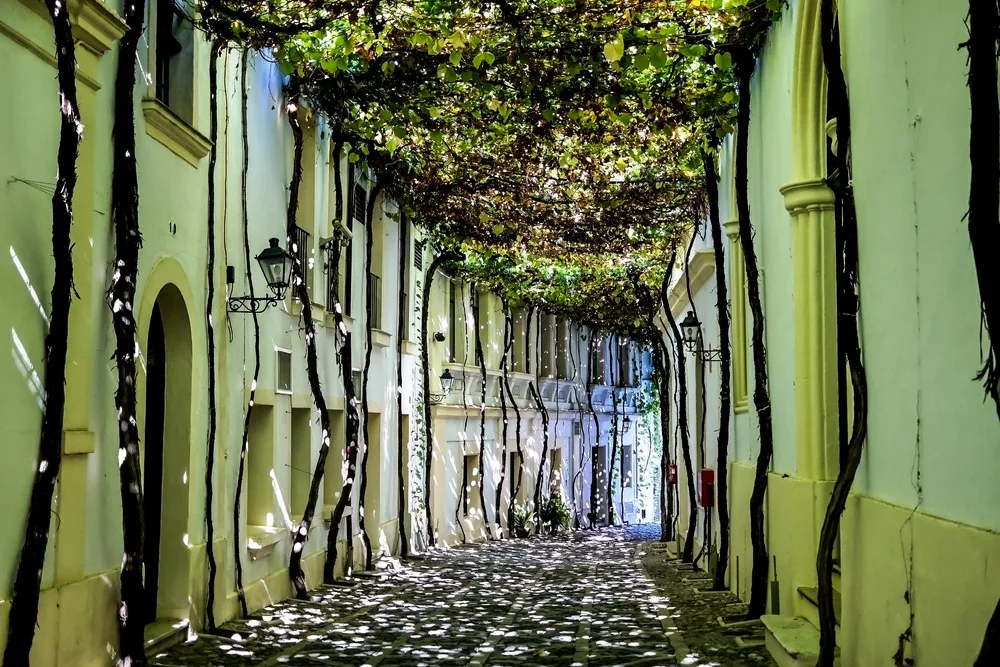
Cooled by the shade of vines in Jerez de la Frontera, Andalusia
Logroño, La Rioja
Population: 150,000
Closest international airport: Bilbao, 140km
The capital city of the La Rioja region of Spain, Logroño is on the pilgrim way of Camino de Santiago. Although many people stop off in the city as they make their way to Santiago de Compostela, it isn’t really a touristy city. Those who do come to stay are there to taste the wonderful wines of the Rioja region and the excellent local cuisine. Being a small city, it is easy to walk out into the vineyards and nature trails which surround it. There are plenty of outdoor activities to enjoy.
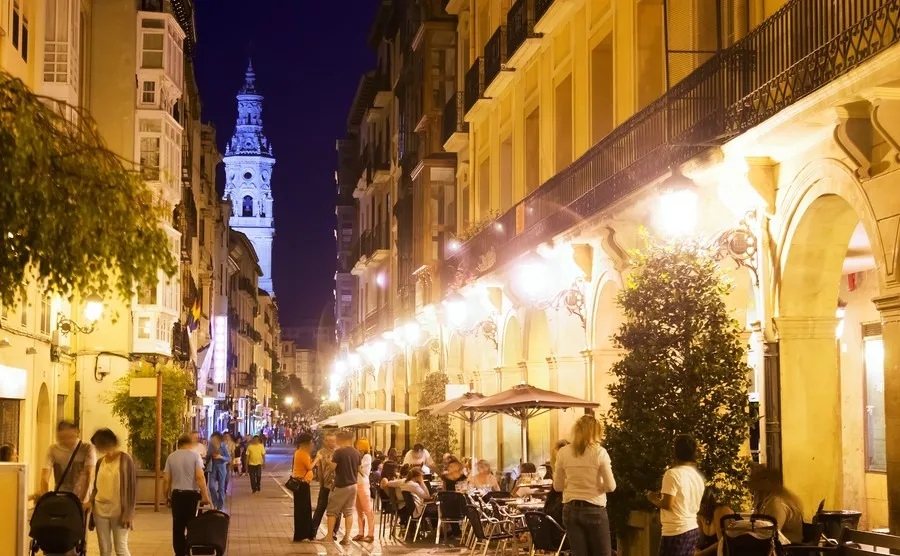
Logrono. Glass of Rioja?
The cost of living is more than reasonable, but there isn’t an international school. The people are known to be extremely friendly and helpful, greeting each other and even strangers in the streets as they walk by. Shopping here is mostly based on small, privately owned shops as there are practically no chain stores, which some people might see as a great advantage.
It is a very Spanish place, one which you will only really get the most out of if you can learn Spanish (at least they speak Castilian Spanish here!). If you’re looking for work, getting an English-teaching (TEFL) qualification will open many doors. There are always teaching jobs available in the language schools.
Accommodation and living costs are comparatively low, with two-bedroom apartment rentals from around €500 per month. So if you can rent out your British home for a year or two, why not give it a try? You can probably live very well just on the difference between renting your home out there and renting here! One extra cost might be a car: transport to other towns is quite poor and a car is more of a necessity here than in our other suggestions.
Córdoba, Andalusia
Population: 326,000
Closest international airport: Seville, 130km, Malaga, 170km
Without doubt, one of Spain’s most beautiful small cities, Córdoba is the epitome of picturesque Spain. It is larger than you imagine as you walk through its glorious winding streets, with a population of around a third of a million. Despite its size, the city follows a slower pace of life, away from the crowded costas. Tourists do come though, to see the famous and beguiling la Mezquita-Catedral, a testimony to an era when people of all religions lived happily side by side; Jews, Christians and Muslims. A highlight is the patio festival each spring, where the courtyards are filled with flowers.
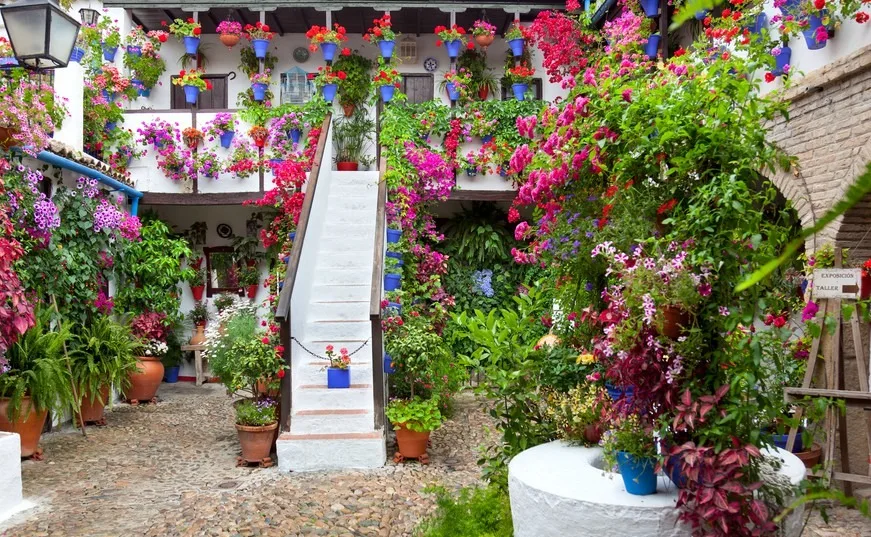
Cordoba Patio Festival
(Taiga / Shutterstock.com)
Cooler than many other Andalusian cities due to its proximity to the Sierra Morena, Córdoba has numerous parks and public gardens in which to wander or find shade. Its fascinating history and its current culture makes it open to everyone. There are British schools, Colegio Britanico de Cordoba and The British School of Córdoba. The cost of living is lower here than in many other Andalusian resorts and cities. The British expat community isn’t huge, but then Córdoba is a very Spanish city away from the coast, which might not suit everyone looking for sun and sea. It is, however, a place for a peaceful life, to raise a family and to enjoy retirement.
It is also extremely well connected to other cities such as Madrid, Barcelona, Seville, Málaga and Zaragoza. The nearest airport is Málaga which offers international and long haul flights.
Find stunning homes in Cordoba on our property portal
San Sebastián, Basque Country
Population: 186,000
Closest international airport: Biarritz 48km, Bilbao, 110km
Recently voted best beach in Europe by users of Trip Advisor, San Sebastián (or Donostia in Basque) is a city to make you wonder why anyone buys on the southern costas. Of course it’s cooler and wetter, and the Bay of Biscay is rougher than the Mediterranean, but the joys of this city are immense. It’s also easy to reach and very well connected from the UK, either by train, sea or plane. The Euskotren will whisk you into Bilbao in just over an hour.
Culturally and gastronomically, San Sebastián is a joy. There are film festivals, jazz festivals, celebrations of Basque culture and numerous festivals to do with the sea. It has one of the highest numbers of Michelin-starred restaurants per capita, but the considerably cheaper pintxos are wonderful too. And to work off all that culture and eating, well surfing, of course, as well as enjoying the mountains that begin just outside of town. Cycling is big in San Sebastián. It even has a pretty good footbal team, in Real Sociedad. But most of all, people like to promenade along the seafront, take a coffee or a drink and a pintxo, and enjoy the ambience.
When you do decide to buy in Spain, Smart Currency Exchange is the specialist in exchanging your pounds into euros. They have two offices in Spain too, in the Costa Blanca and Costa del Sol. Read Smart’s guide to Buying Property here.
There is an English school in San Sebastián, St Patricks, and four universities, including ones that specialise in catering and music. They do like the finer things in life in San Sebastián! Being so easy to reach – it’s just 20km from France – there is a good international community.
Of course there had to be a downside. Property in San Sebastian here is among the most expensive in Spain.
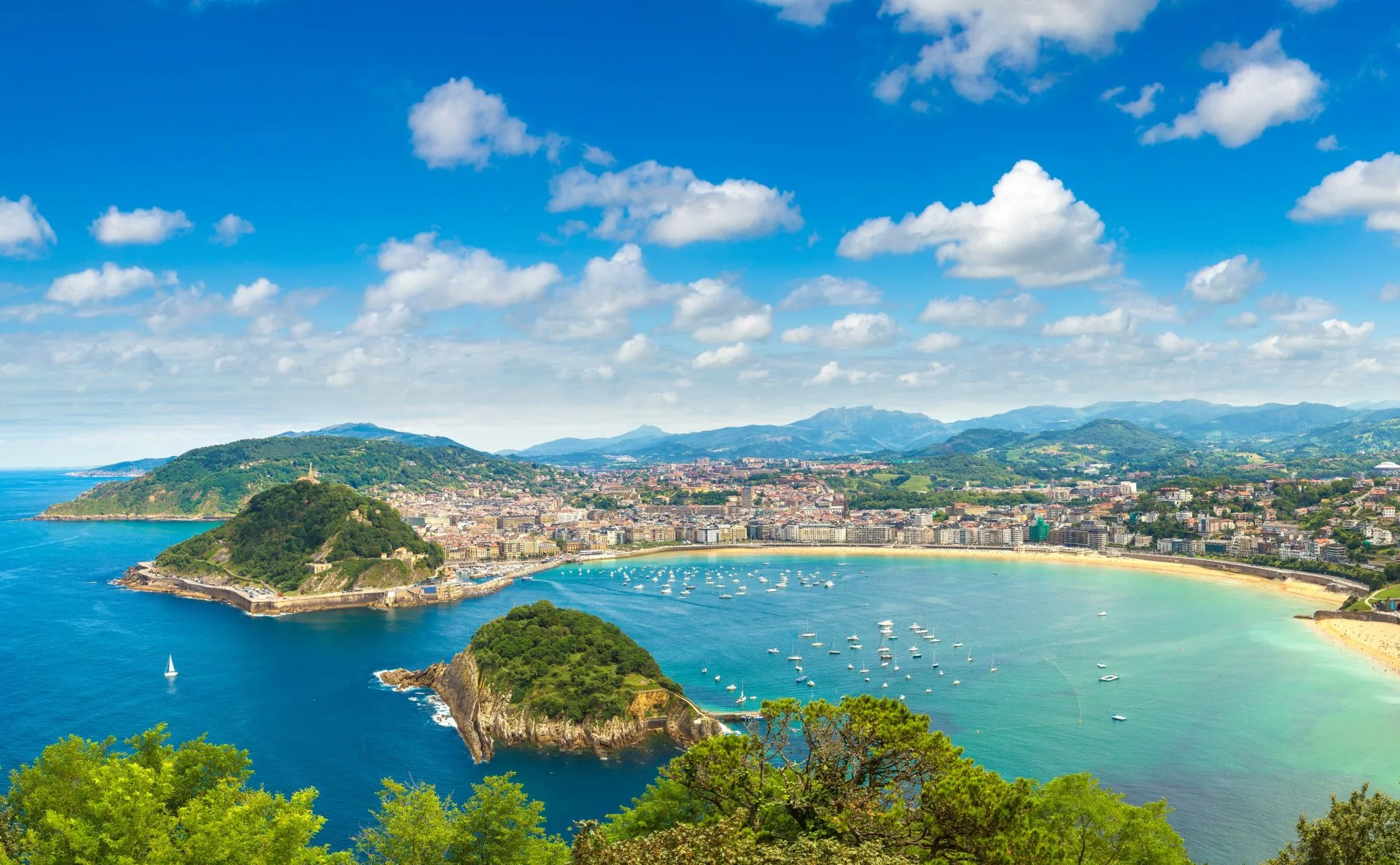
The most attractive beach in Europe? Playa de la Concha.


